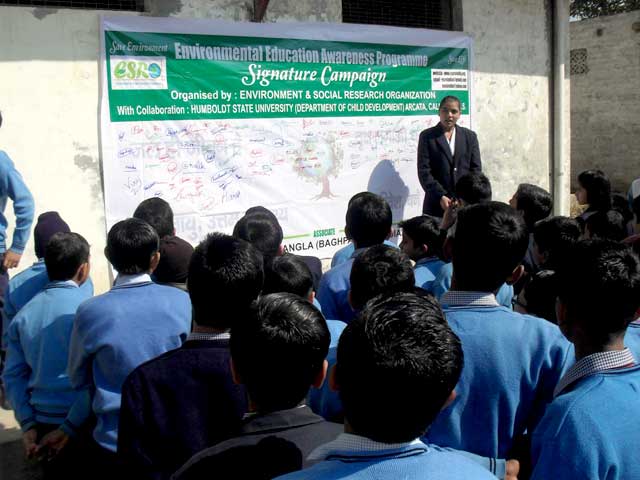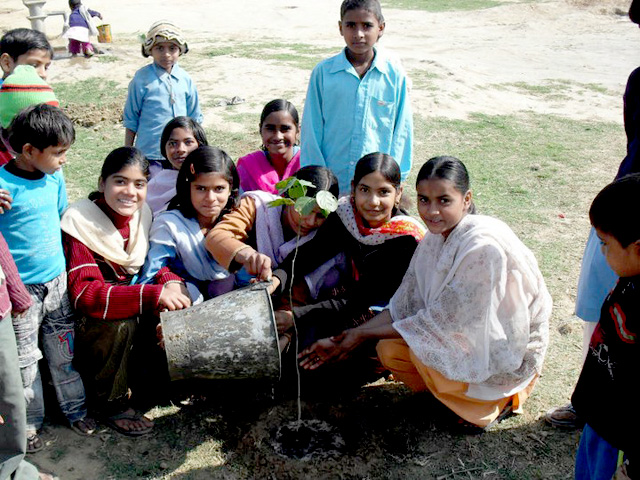
“Young people in India represent 25 percent or more of the population. So there is a big potential in working with them,” says Rana.
That’s why she became involved with the Environmental and Social Research Organization, or ESRO, a non-governmental organization operating in rural northern India that focuses on raising grassroots awareness of issues that affect the wellbeing of Indian people. ESRO tackles issues like waste management, sanitation, water resources, health system, rural development, livelihood and improvement of urban slums, forestry and eco-development. Founded in 2013, ESRO is a relatively new NGO, and as such isn’t eligible for grand funding until 2016. For Rana, lending a hand with curriculum development was both a way to support ESRO, and utilize her academic expertise.
Through ESRO, Rana identified 9th graders at several private schools, and set about developing curricula in environmental and health and nutrition awareness—two areas, according to Rana, that can improve many lives in India, but are rarely discussed in school.
The next steps included having ESRO volunteers translate the educational materials into Hindi and identifying the students who would take part in the programs. To join, students had to pass an exam, with the idea that setting a standard for scholarship and involvement would make the project more impactful for students.

“We had 56 youth involved from private schools and they all had lots of enthusiasm, especially because they were connected to something bigger than them—a university thousands of miles away in California. They loved the HSU connection,” says Rana.
Over the next school year, projects began unfolding: the environmental education program Let’s Save Our Mother Earth put students to work designing and building gardens with recycled supplies. Students also participated in Eat Right to Live Bright, a nutrition and physical education program that included a 5k run and a signature campaign with the aim of raising awareness around health issues. Empowering 9th graders with this knowledge had a broad impact. With Indian schools organized to serve students from kindergarten through 12th grade all on one campus, educators capitalized on opportunities to share this knowledge with both older and younger classmates.
The ESRO projects are due to begin their second year this July, and will involve a new group of 9th graders who will be mentored by last year’s students. According to Rana, community service is a great addition to university applications and, in the future, she hopes to see such service become a requirement for college admission. The 10th graders will also help create an evaluation of the program to make sure students are improving their grade point averages, and finding value in the work. Rana is especially interested in the potential research aspects of this work, whether that involves tracking the self-development of girls in rural India or involving her own students from HSU’s Department of Child Development.
For more information, visit esroindia.org.